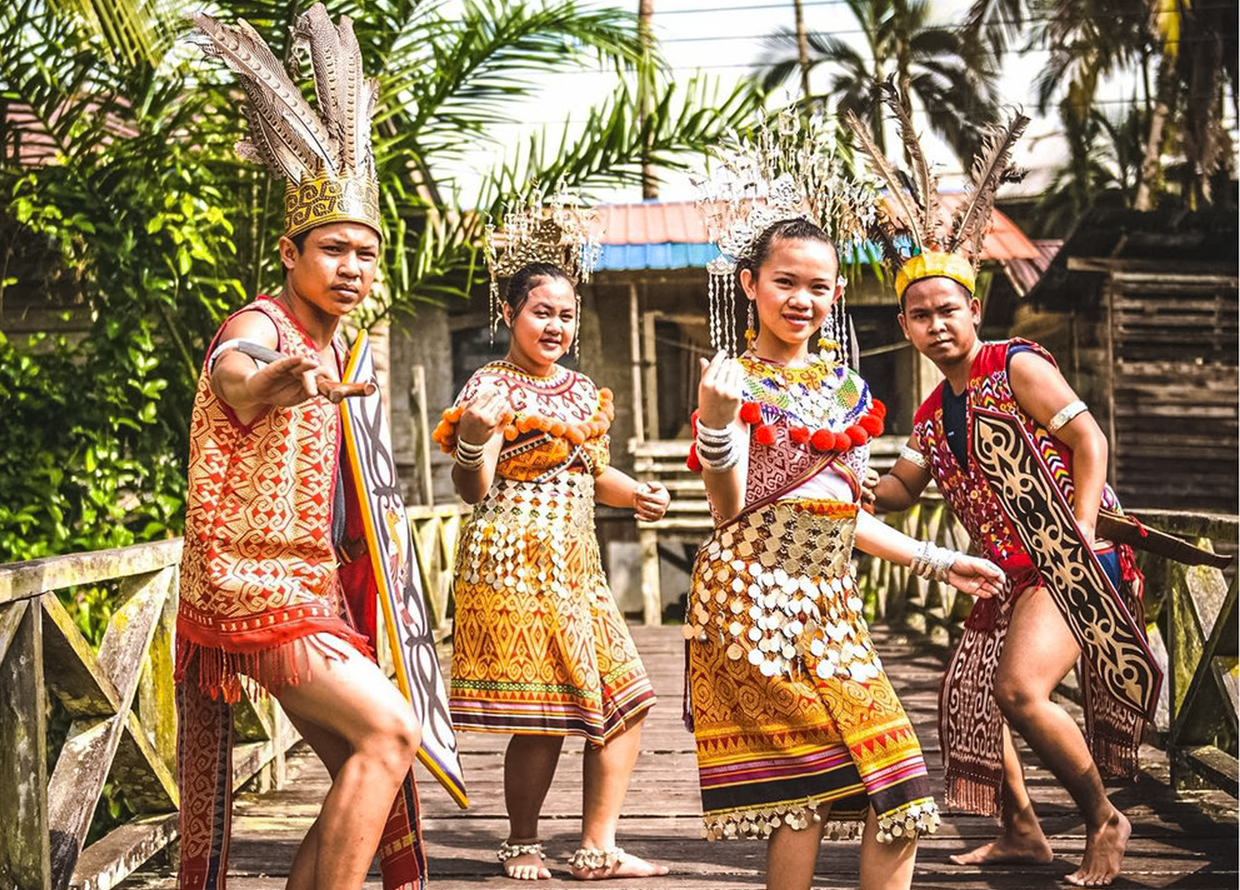Everything You Need To Know About Gawai Dayak
Selamat Ari Gawai!

As this month concludes, there’s just one thing left on the list that hasn’t been ticked off—Gawai Dayak! If you don’t already know, Gawai Dayak is an annual celebration held in Sarawak by the indigenous community to honour food harvested on the land. Read on to find out more about the fun-filled cultural festival and where to celebrate the occasion.
What is Gawai Dayak, and why is it celebrated?
Gawai Dayak, also known as Hari Gawai, is a traditional festival celebrated by the Dayak ethnic groups—the Ibans and Bidayuhs—primarily in Sarawak. The Dayak people used to kick off the celebrations after the harvest season in April or May, but it was marked formally and gazetted as a public holiday in 1964, with the festivities lasting up to a month.
Essentially, Gawai Dayak is observed to mark the end of the harvest season and to express gratitude to the Gods or petara for all the harvests received during the season. Aside from that, it is also a day to celebrate the spirit of the harvest to ensure that they will continue to get blessings in the future.
View this post on Instagram
What preparations are needed to celebrate Gawai Dayak?
The Dayak tribes usually start their preparations for the auspicious celebration about a month in advance, with the older generation brewing tuak, commonly known as rice wine. And, of course, what would a celebration be without food? Whether you favour sweet or savoury delicacies, there is always something for everyone! Traditional feasts such as penyaram—a snack sweetened with palm sugar, kuih cuan—a Malaysian version of honeycomb cookies, and kuih sarang semut—a delicacy that resembles an ant nest—are often prepared by the ladies.
View this post on Instagram
Meanwhile, meat braised in soy sauce, glutinous rice roasted in bamboo, and manuk pansuh—chicken cooked in freshly-cut bamboo stalks—are popular savoury dishes. Nearing the much-anticipated festival, the longhouse will also be decked with the ‘Ranyai’ tree, which will be set up in the middle of ruai—a communal area in the longhouse—and decorated by the longhouse community with a range of products, including fruits, snacks, and canned drinks.
How is Gawai Dayak celebrated?
On the eve of Gawai, the Iban community that still practises folk religion will hold miring—a thanksgiving and blessing ceremony to honour their gods, spirits, and deceased ancestors before having a feast together in ruai. At the stroke of midnight, everyone will take a sip of tuak, but first, they will say “Ooohaa” to let others know that the celebrations have begun. To make the occasion more lively, ngetas ranyai will be carried out, where guests and a member from each household take turns doing the Ngajat dance around the tree before picking up all the goods hanging from the tree.
View this post on Instagram
What are the things to do to enjoy the festive atmosphere?
Pageant events such as ‘Kumang Gawai’ and ‘Keling Gawai’ will take place throughout the month to build excitement before the celebration. As with any cultural pageant, the contestants are assessed based on their knowledge of the culture and traditions, in addition to their physical appearance. What is equally significant is the traditional attire they wear, as well as the accessories they adorn during the event.
View this post on Instagram
Much like Raya or Chinese New Year, Gawai Dayak is also celebrated by visiting each other’s homes. This practice is known as ngabang, and it’s just the perfect time to catch up with family and friends! Plus, if you have Dayak friends and want to wish them well, you can say, “Selamat Ari Gawai, Gayu Guru Gerai Nyamai,” which translates to, “May you live long and have good health.”
Where can we celebrate Gawai Dayak?
Now that you know all there is to know about the cultural festival, it’s time to immerse yourself in its rich heritage by attending Gawai events happening all around the Klang Valley! Find them below.
Taste of Borneo
View this post on Instagram
When: 30 May to 1 June 2025, 7am to 5pm
Where:Pasar Borneo Seri Kembangan
Price: Dependent on chosen drink
This Gawai Dayak, the Michelin-selected restaurant, Barkar, is bringing the spirit of Borneo to your taste buds, literally! Collaborating with local tuak artisans Tisibukit Btuak, this exclusive tuak tasting features four distinct brews which are rooted in Bornean tradition and reinterpreted into fun tipples for the modern palate. If you’ve always wanted to try tuak, this is the perfect opportunity for you to savour its unique flavours.
For the latest updates, follow Barkar on Instagram.
Harvest Fest
View this post on Instagram
When: 31 May and 1 June 2025, 12pm to 8pm
Where: REXKL
Price: Free entry
This weekend, REXKL is transforming the heart of KL into a vibrant cultural gathering with a Harvest Festival Pop-up! Expect a colourful celebration of culture, tradition, and community, where highlights include indigenous arts and handmade goods to flash tattoos and traditional designs.
For the latest updates, follow REXKL on Instagram.
PESTA GAWAI & TADAU KAAMATAN PASAR BORNEO 2025
View this post on Instagram
When: 12 July 2025, 7am to 5pm
Where: Pasar Borneo Seri Kembangan
Price: Free entry
There’s nothing like celebrating Gawai Dayak at a bustling bazaar, and Pasar Borneo has got you covered! Experience the lively and rich culture of Sabah and Sarawak by immersing yourself in scrumptious traditional foods, live cultural performances, and the chance to take part in traditional games and a karaoke contest where you can win lucky prizes!
Follow Pasar Borneo on Instagram for the latest updates and for more information, contact +6019-8859880 or +6016-2497934.
Read more stories on culture here.
| SHARE THE STORY | |
| Explore More |



